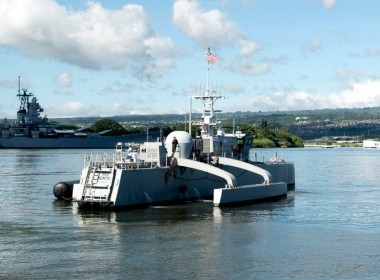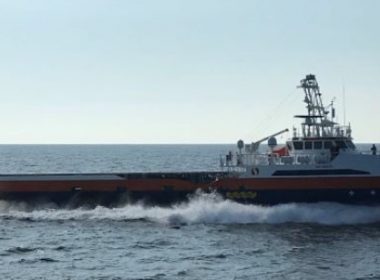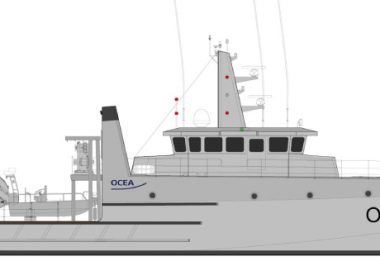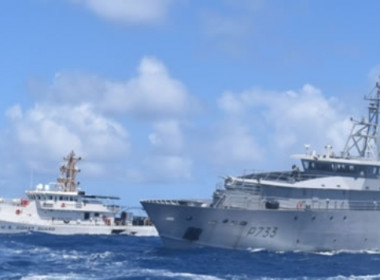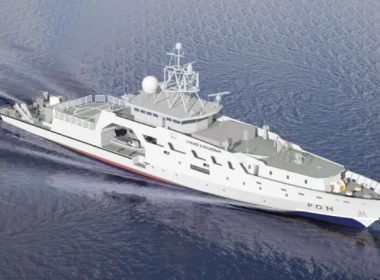VESSEL REVIEW | Artemis – First in new series of unmanned minehunters for French Navy

The French Navy has taken delivery of the lead example of a new type of unmanned surface vehicle (USV) developed under the service’s Future Mine Warfare System (Systeme de lutte anti-mines futur; SLAM-F) program.
The 12-metre-long USV, which has been given the name Artemis, is part of a complete system that also includes a towed synthetic aperture sonar, a remotely operated vehicle (ROV), two unmanned aerial vehicles (UAVs), and an operations centre housed in a pair of six-metre containers. In an operational setting, two USVs will be deployed in tandem with one craft fitted with the towed sonar and the other carrying the ROV and the UAVs. The smaller unmanned vehicles will be equipped with their own mine detection sensors.
The USV can be remotely controlled from shore or another vessel, though it can be programmed to sail through pre-determined waypoints. Operations are possible even under conditions of Sea State Four.
The SLAM-F system was developed by a partnership of defence technology firm Thales, European intergovernmental organisation OCCAR, French robotics manufacturer ECA, and UK unmanned systems specialist L3Harris, which supplied the USV. Some of the members of this same partnership are also developing similar unmanned mine countermeasures (MCM) systems for the UK Royal Navy under a separate program.
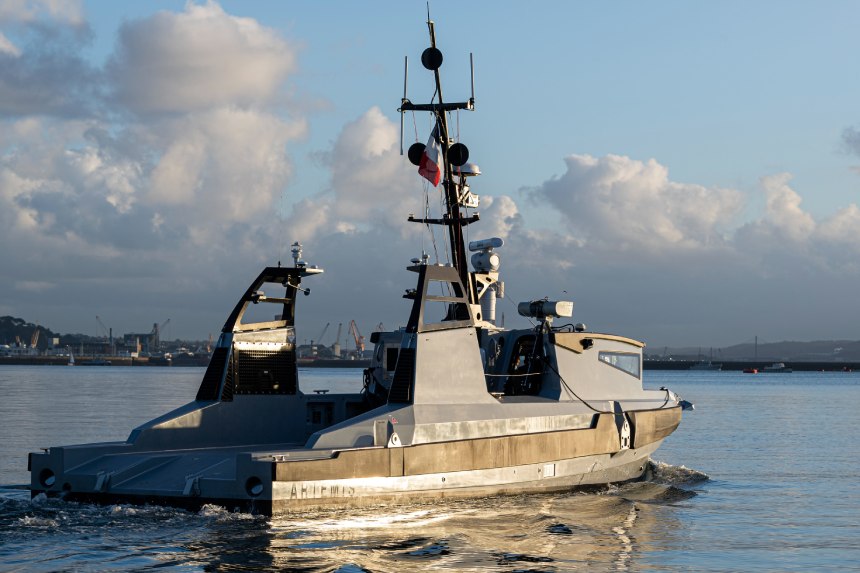
The SLAM-F program came about due to the need to ultimately replace the French Navy’s aging MCM assets, which include crewed minehunting vessels and associated equipment such as sonars, by 2029. The use of unmanned craft will mean human crews will not be put at risk during MCM operations, even when dealing with obsolete types of mines that are still found in large numbers in the world’s oceans.
The system also offers improved mine detection coverage compared to its predecessors. Mines can now be detected at depths of as much as 300 metres, which is triple the capacity of the French Navy’s existing MCM systems. Also, higher-resolution images can now be captured thanks to the more sophisticated Thales towed synthetic aperture sonar deployed by the USVs. If a suspected mine has been detected by the towed sonar, the ROV will be deployed to further verify its identity. The ROV’s own sonar is also a synthetic aperture sensor and is capable of taking three different images simultaneously within a 300-metre-wide swathe.
If the object is confirmed to be a mine, a human operator can remotely deploy a specialised mine neutralisation system fitted on the rear of one of the USVs. This system, developed by Saab, is capable of deploying and securely attaching explosive charges to any identified mines. Detonation of the charges will be done remotely and only after the USVs have sailed a safe distance away from the projected blast zone, thereby minimising the risk of damage to the unmanned craft.
The first SLAM-F USV will undergo further testing. The French Navy expects the system to achieve initial operational capability by 2024.
| Artemis | |
| SPECIFICATIONS | |
| Type of vessel: | USV – Naval |
| Flag: | France |
| Owner: | French Navy |
| Builder: | L3Harris, UK; Thales Group, France |
| Length overall: | 12 metres |
| Sonar: | Thales |
| Armaments: | Saab mine neutralisation system |


